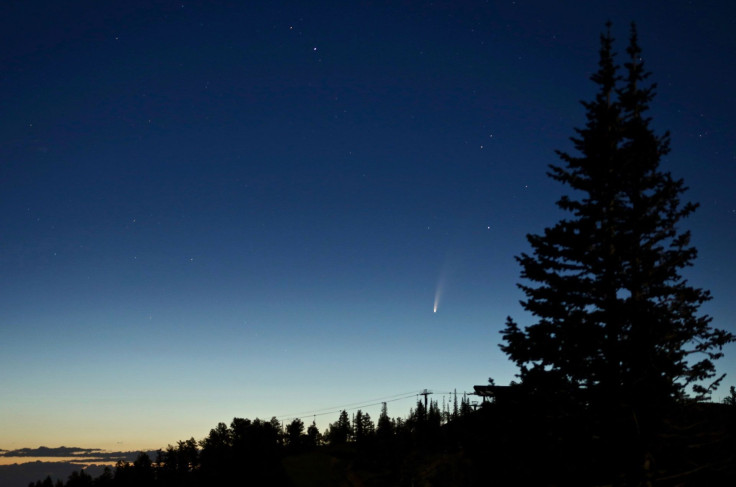Is Comet Leonard Fading? Spot The Once-In-A-Lifetime Comet Coming Closest To Earth This Weekend
KEY POINTS
- Comet Leonard is set to make a close approach to Earth on Sunday
- Observations of the comet suggest that it may be fading
- There is still time to catch a glimpse of Comet Leonard
Comet Leonard can be quite a treat for sky watchers as it makes its close approach to the Earth, but is it on its way to breaking apart?
Comet Leonard (C/2021) A1 was first discovered in January when it was still past Mars. But its orbit will actually take it closer into the inner solar system and it is set to make a close approach to Earth in mid-December. It is expected to reach its peak brightness around Dec. 13-14 and may even be visible to the naked eye.
Although it is a rather "typical" comet, it will actually be "very" pretty, the European Space Agency (ESA) noted. In fact, it is expected to be the "brightest comet of the year." Furthermore, catching a glimpse of it could be a unique opportunity because when it goes out of our solar system, it won't be coming back again.
However, spotting Comet Leonard may be a little more tricky than expected as some observers noticed that it was brightening by the end of November. This was just because it was coming closer and not that it was actually becoming brighter itself, Space.com reported. In other words, the comet may be fading.
"It's not great news. The comet should be brighter and brighter. If it's not getting brighter then something's wrong, but we don't know exactly what at this stage," Quanzhi Ye, an astronomer at the University of Maryland, told Space.com. "Why it's fading, there are all kinds of hypotheses. The simplest and the most obvious one is something unhealthy is happening to the comet."
In the past, there have been incidences of comets breaking apart when they get closer to the sun, the outlet noted. In 2020, for instance, Comet ATLAS was also expected to be "one of the most spectacular comets" seen in the past 20 years, but it ended up getting dimmer instead of brighter. Eventually, it broke apart.
Ye noted that the comet "seems to be OK" as of Tuesday morning, but the fading is still ongoing.
"Time will tell, we don't know at this point," the astronomer said.
There is still time to try and catch a glimpse of it as it comes closest to Earth this Sunday. Although it's not visible to the naked eye, it's a "good binocular comet," EarthSky noted. People can watch the comet before sunup as it makes this close approach and if it remains intact, it can be spotted just after sunset around Dec. 14-16.
There are also free online viewing events for the comet.
C/2021 A1 Leonard 10° tail 2021 dec. 8 UT 4.15 5x3min Zeiss-Milvus f-135/2.8 Nikon Z50mod Michael Jäger pic.twitter.com/ZD23fGzt2s
— Michael Jäger (@Komet123Jager) December 8, 2021
"In a cosmic coincidence," the Geminid meteor shower, which is regarded as one of the "best and most reliable" meteor showers of the year, will also peak around the same period on the evening of Dec. 13-14, the ESA noted. Together, the two cosmic events could make for a truly special sky watching experience.

© Copyright IBTimes 2025. All rights reserved.






















